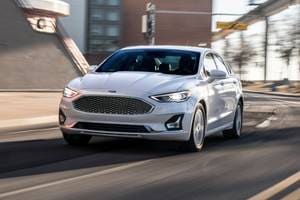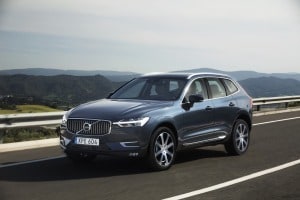Recent Economic Data: Threats to Auto Sales?

After an exciting first quarter, auto sales momentum looks alive and well for April too. According to Edmunds.com's forecast for April, auto sales will total 14.4 million at a seasonally adjusted annualized rate (SAAR). This would be the highest April since the early recession in 2008 and the fourth straight month of SAARs greater than 14 million. Pent-up demand from deferred auto sales during the recession is finally coming back to the market in a substantial way and the now four-month SAAR run suggests good times ahead for the auto industry.
Based on the strength of first quarter demand and its positive implications for the months ahead, Edmunds.com raised its 2012 forecast to 14.4 million vehicles from the 13.6 million predicted at the beginning of the year. Certainly, there is no shortage of pent-up demand still to be released; Edmunds.com estimates that there are at least four million units left to be recovered. The need to replace aging vehicles — 10.8 years on average for vehicles in operation in 2011 — should put increasing pressure on consumers to return to market. But, for consumers who do not "need" a new car, current economic conditions and future expectations will remain a key driver of whether consumers feel confident enough to purchase large durable goods such as autos, and these factors should be closely watched when considering the outlook for auto sales. Last week's economic data contained several numbers that suggested potential threats to auto sales on the horizon. But, a closer look at the data suggests that there is no cause for concern yet.
-
Gross Domestic Product (GDP): Maybe the most anticipated data of the economic week was the first report on real GDP for first quarter 2012. GDP is the broadest measure of economic activity and covers the whole economy. The quarter-over-quarter growth rate of 2.2 percent came in lighter than expectations and well under the 3 percent growth seen in the fourth quarter of 2011. This decrease appears to suggest slowing economic growth, and by extension weaker auto sales on the horizon. But, fourth quarter GDP growth reflected a "mini-bubble" in auto sales, the result of an influx of buyers who had delayed car purchases due to earthquake-related shortages during summer 2011. Fourth quarter retail sales also reflected a rebound from third quarter caution as consumer concerns about a double dip recession eased. As a result, first quarter growth, rather than reflecting a slowing, could well be in line with actual economic activity once the effects of last year's extraordinary events are accounted for.
In addition, the first quarter numbers contain a couple of positive notes for future auto sales. First, personal consumption expenditures — consumer spending on goods and services — showed solid improvement over the strong fourth quarter at 2.9 percent growth. Although strength in auto sales largely drove the increase, spending on both non-durable goods and services both grew more in the first quarter of 2012 than in any quarter during 2011. Second, export growth doubled to 5.4 percent from 2.7 percent in the fourth quarter. Given the slowdown in China and economic difficulties in Europe, it is encouraging that U.S. exports are still growing — and at an increasing rate — since exports have been a key contributor to GDP growth during the recovery to date and a slowdown in exports is a key source of risk to auto sales this year. -
Consumer Confidence: The consumer confidence data reported this week revealed that confidence growth has stalled. But, at 69.2, confidence is among the highest levels of the recovery to date and April is the third month of consistently high levels. (Another measure of confidence — the University of Michigan's consumer sentiment index — reflected slight growth and is similarly near its recovery high point.) Individual indices on current conditions and future expectations revealed that while consumer assessments of current conditions continue to improve, they remain cautiously optimistic at best about improvements in the short term.
One point of particular concern is that the share of households indicating intent to buy a car in the next six months dropped sharply. Combined with declining expectations about future jobs availability and income improvement, this data appears to indicate that upcoming auto sales are at risk. At this point, though, there is not enough evidence to be concerned. The drop in households expecting to buy a car likely reflects an adjustment of expectations by consumers who saw strong jobs growth in January and February tempered by more moderate growth in March. As with GDP growth, the strong rise in jobs growth could be accounted for by deferred hiring by companies who had held off filling positions during the economic weakness and uncertainty last summer. Once they saw consumers returning to the market in the fourth quarter, these companies filled backlogged positions after the holidays. As a result, January and February jobs growth reflected a hiring "mini-bubble" rather than a new baseline level and consumers have begun to adjust their expectations accordingly.

Given the strength of pent-up demand, though, it is unclear whether auto sales will actually be less than expected due to this adjustment. In particular, for consumers who have the means to purchase a new car and can obtain credit, confidence should remain strong in the next few months, fueled by falling gas prices, a strong stock market, and continued growth.

Lacey Plache is the Chief Economist for Edmunds.com. Follow @AutoEconomist on Twitter.





